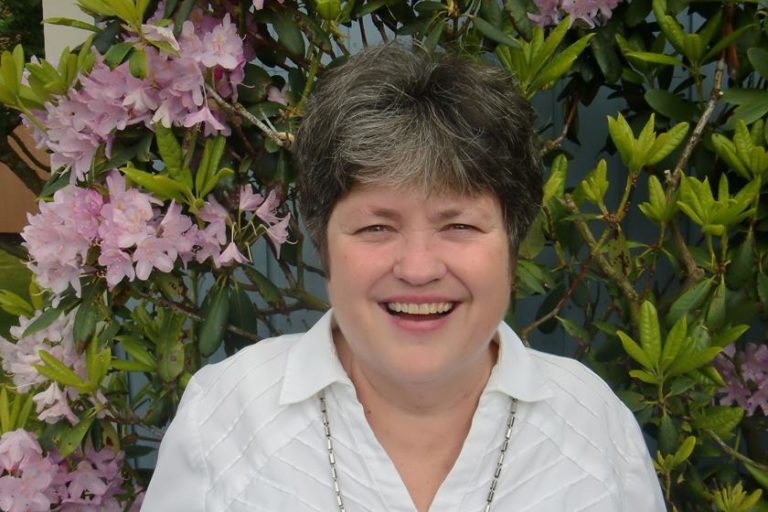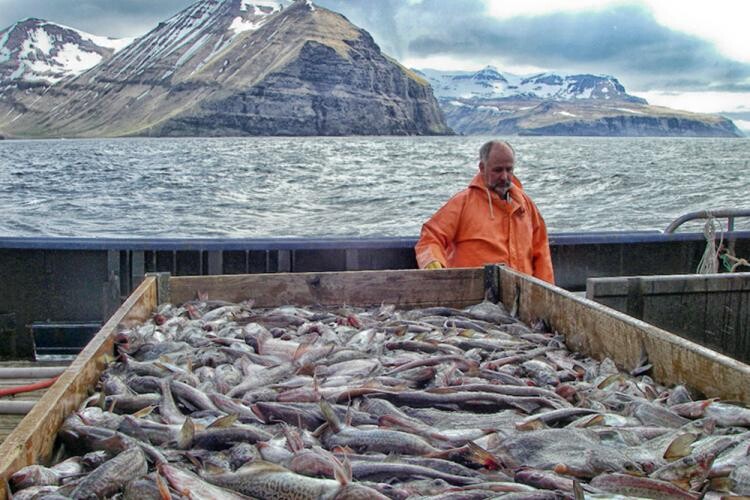The North Pacific Fishery Management Council (NPFMC) met last week in Anchorage, Alaska, following a pollock trawling bycatch incident, where 2,000 king (or Chinook) salmon were caught in one day by two vessels. National Fisherman caught up with Julie Bonney from Alaska Groundfish Data Bank (AGDB) to clarify some of the questions that have been lurking following the incident.
The National Marine Fisheries Service (NMFS) was forced to close most of the Gulf of Alaska to pollock trawling last week after two midwater trawlers accidentally netted 2,000 Chinook salmon in one day, bringing the estimated season total of Chinook bycatch to near or over their allowable number. While pelagic or midwater gear is supposed to be off the seafloor, recent studies found that trawl nets contact the bottom on average 40% to 80% of the time, with rates up to 100% on factory ships, also called catcher/processors.
Last week's closure halts fishing for 20 boats ahead of their scheduled Nov. 1 closure. The North Pacific Council met last week in Anchorage to discuss whether or not to clarify if midwater nets should be allowed to drag the bottom.
“This is a wake-up call for all Alaskans," said SalmonState’s Tim Bristol. “Thankfully, the vessel that caught these salmon had electronic monitoring on board, but what would have happened if it was one of the majority of the boats fishing the Gulf of Alaska without human or electronic observer coverage?”
In recent years, only about 32 percent of boats trawling in the Gulf of Alaska have had observer coverage.
So far this year in the Gulf of Alaska and Bering Sea, observed trawl bycatch numbers stand at:
- 34,017 Chinook salmon
- 44,843 Chum salmon
- 818,476 crabs
- 3.8 million pounds of halibut
- 3 million pounds of herring
Sources shared that 20 boats have to cut this pollock season short. Julie Bonney from the AGDB told sources regarding the incident, “From a community perspective, it’s huge. Nobody’s happy about the closure, but they understand the reason.” AGDB is a member-based organization representing the Gulf of Alaska shoreside trawl catcher vessels and processors, primarily in Kodiak.

Bonney owns and is the executive director of Alaska Groundfish Data Bank in Kodiak, Alaska, and has agreed to answer questions that have been lurking since the incident.
Q: The pollock industry is very important to Alaska's economy, so how can trawlers and the salmon fishery work together to ensure the sustainability of Chinooks moving forward after this bycatch incident?
A: The pollock fishery has a longstanding commitment to partnering with a wide range of stakeholders to ensure the sustainability of Alaska’s marine ecosystems, and we’ll continue to do so. This includes partnering with Alaska universities to develop new technologies that further reduce bycatch and working with state and federal fishery managers to continually improve data collection to understand fishing and climate impacts better.
Importantly, our commitment to ensuring the sustainability of Chinooks begins with our captains and our fleet. They are just as concerned with avoiding salmon and other non-targeted species as they are with catching pollock.
For example, we put in place voluntary Chinook salmon hotspot preseason and stopped fishing after the lightning strike event to let the bycatch information enter the system because we were concerned the bycatch cap was at risk of being exceeded. We have advocated for a LAPP (Limited Access Privilege Program) for our fisheries before the NPFMC for more than 20 years, which would include individual accountability for participating vessels.
Q: What are AGDB's views on the current level of observer coverage in the Gulf of Alaska trawl fleet (32%)? Do you support increasing the use of electronic or human monitoring?
A: The electronic monitoring (EM) coverage will change in 2025 so that all trips will be monitored 100% of the time, both at-sea and 100% of those trips will be monitored at the shoreside processing plant.
The EM monitoring will go from one in three trips presently to every trip in 2025. AGDB has been working on EM for the pelagic pollock fishery for five years and supports this improvement.
Q: What changes, if any, does AGDB believe should be made to gear or fishing practices to reduce bycatch or the potential for bottom contact within the mid-water trawl fleet?
A: AGDB is involved in a research project to understand the impacts of pelagic gear on the sea floor. We need the results of that research to determine whether the gear impacts the sea floor and, if so, how best to modify it.
Regarding fishing practices to reduce bycatch, the GOA (Gulf of Alaska) trawl fleet needs a LAPP like the BS American Fishery Act (AFA) pollock cooperatives that creates individual vessel accountability.
Q: How would further restrictions on trawling, particularly regarding bycatch or gear limitations, impact your operations and the economic viability of the fishery?
A: It depends on what those restrictions are and whether they are regulated by the Council (top-down) or whether they can be done internally by industry (bottom-up) to meet Council management objectives. For example, gear limitations, once the research is performed and the impact of gear is understood, then the industry can work towards solutions that fix the identified problem. We are the local knowledge holders who make changes to address both bycatch and gear limitations while achieving management objectives.
The incident serves as a stark reminder of the delicate balance between Alaska's commercial fisheries and the sustainability of its marine ecosystems. As NPFMC and stakeholders like AGDB grapple with how best to mitigate future incidents, it is clear that advancements in technology, stricter monitoring, and adaptive fishing practices will be critical. Collaborative efforts between industry and regulators will shape the path forward, ensuring that both the pollock and salmon fisheries can thrive while protecting the state's valuable natural resources for future generations.







